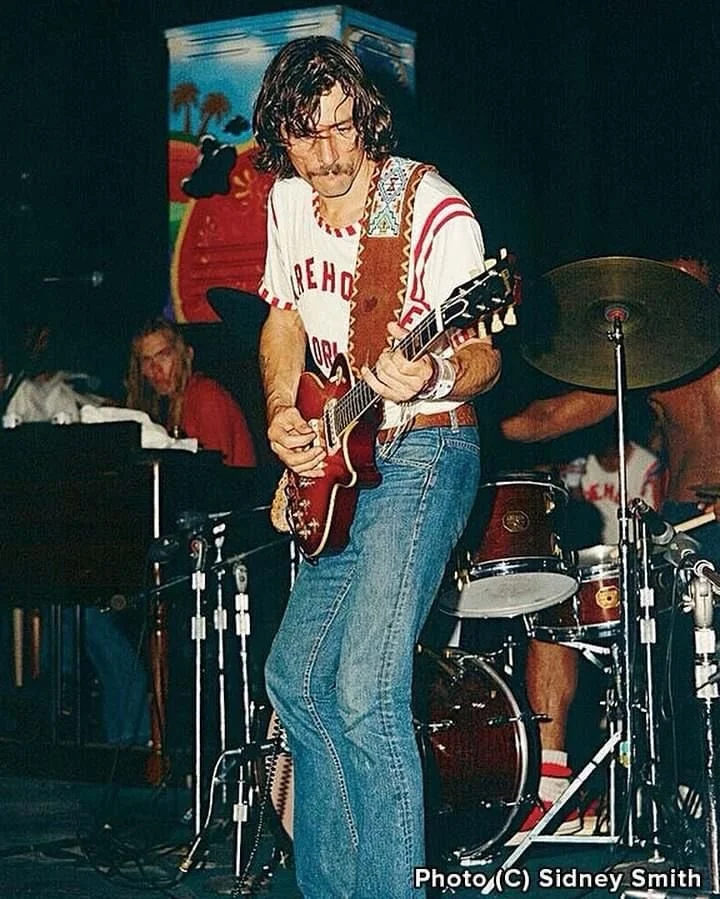Why Jam Bands Still Rule: Improvisation, Community, and the Long Game
Photo Credit: Sidney Smith
In a music industry driven by instant gratification and algorithmic efficiency, jam bands remain a quiet act of resistance. No singles engineered for TikTok. No carefully timed viral rollouts. Just players—on stage, on wax, in motion—stretching songs beyond their limits to see where feeling leads.
They’re not relics. They’re reminders.
From the Grateful Dead and Phish to Goose, Umphrey's McGee, Widespread Panic, and beyond, jam bands represent a legacy of improvisation that continues to evolve without asking permission. They are not bound by genre, release cycles, or algorithmic polish. Instead, they operate on a different frequency—one rooted in presence, risk, and communion.
The Anti-Algorithm Approach
Jam bands don’t fit the digital mold. Their songs are too long. Their arcs too unpredictable. Their best work isn’t in the studio, but in the moment—changing night to night, venue to venue.
“Jam music is like a real-time conversation,” says Mike Gordon of Phish. “You're listening as much as you’re playing. You can’t rehearse it—you have to trust the moment.”
This makes jam bands deeply incompatible with the Spotify economy—and deeply resonant with vinyl collectors. Jam bands ask for time. They ask for presence. The best of them reward both.
Whether it’s Phish's winding epics, the Dead’s endless live vaults, or Goose’s modern longform compositions, this is music made for intentional listening. It's the opposite of curated playlists and “skip in five seconds” behavior. And it’s working.
Community Over Consumption
What makes jam bands endure isn’t just musicianship. It’s culture.
Fans don’t just listen—they follow. They swap live show tapes. They log setlists. They travel. They build a shared language around moments that will never be replicated. It’s a direct counterpoint to passive listening.
“There’s a built-in humility in this space,” says Peter Anspach of Goose. “No one comes to a show expecting perfection. They come for whatever happens—because it’s only going to happen once.”
Jam bands create ecosystems. From Deadhead parking lot bootlegs to Phish.net archives to Goose’s digital taper communities, the audience becomes part of the performance. The band doesn’t just release music—they live it with their audience.
They’ve turned concerts into rituals, setlists into lore, and recordings into artifacts. Every Goose audience member with a field recorder, every cassette dub of a 1978 Jerry show, every frantic post-show message board entry is proof: this is living history.
Improvisation as Artistic Rebellion
In a music landscape obsessed with perfection, jam bands embrace imperfection.
They leave space for failure, because that’s where discovery lives. Every show could collapse—or transcend. That volatility is the art form.
“Improvisation is about surrender,” said Jerry Garcia in a 1985 interview. “You give up control to find something truer. And when it lands, you can feel it in your bones.”
This philosophy is more than performance—it’s pedagogy. Jam bands teach us how to sit in uncertainty, to listen for nuance, to react instead of control. That’s art. That’s life.
It’s jazz logic in a rock shell. It’s folk tradition in an electrified frame. It’s something that can't be faked—and won’t be polished down.
Why It Matters at Moose Vinyl
So maybe the question isn’t just “Why do jam bands still matter?”—maybe it’s “Is this another jam band summer?” From Goose headlining festivals to younger listeners diving into live Dead box sets, there’s a quiet groundswell building.
Because when the weather warms up and the speakers move outside, people don’t always want perfection. They want a groove that breathes. A band that plays past midnight. A song that didn’t exist until five minutes ago.
At Moose Vinyl, we believe in listening as a ritual, not a reflex. Jam bands represent a kind of commitment—art without shortcuts, music without automation. That’s what keeps us turning records.
They don’t just play songs. They build moments—and invite you in. The band doesn’t play for you. They play with you. That’s the power. That’s the promise.
Whether you're pulling a clean OG of Europe '72, flipping a 3-LP Phish live drop, or hunting down Goose’s latest press, the jam band section of your shelf is a living archive of sound in motion.
This week, we honor the long song, the winding solo, the crowd-sung chorus that only happened once. We honor the jam—not as genre, but as practice.
Still messy. Still human. Still worth showing up for.

